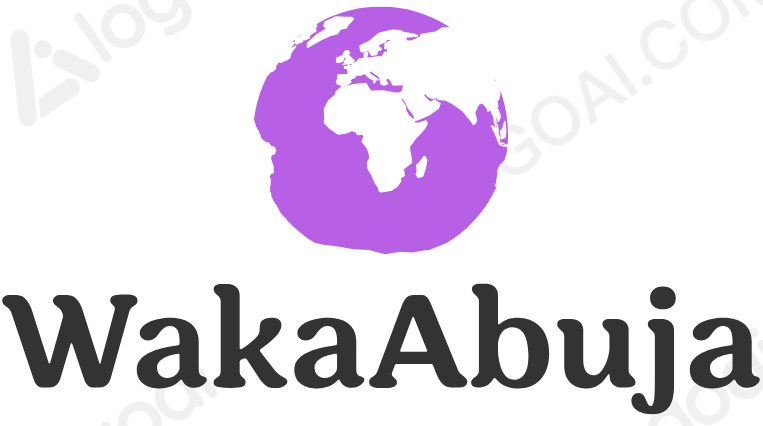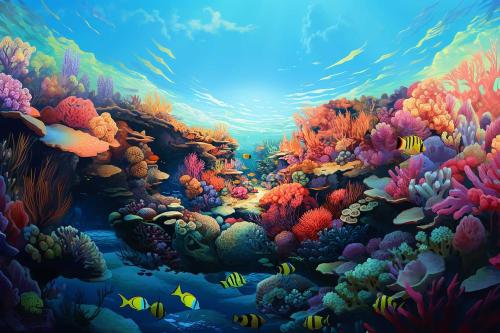It is a once-in-a-lifetime experience to snorkel in the Great Barrier Reef. This UNESCO World Heritage site has over 1,400 species of fish, 400 types of coral, and countless marine creatures. After exploring the Great Barrier Reef, I am excited to share my personal insights, tips, and essential information to help you enjoy your snorkeling trip.
What are the benefits of snorkeling at the Great Barrier Reef?
Along the coast of Queensland, Australia, the Great Barrier Reef stretches over 2,300 kilometers. A top destination for marine enthusiasts, it has rich biodiversity and stunning landscapes.
Key Features of the Great Barrier Reef
- Vibrant Marine Life: Home to thousands of marine species, including clownfish, sea turtles, and even reef sharks, the reef is a living mosaic of color and life.
- Diverse Ecosystems: From shallow lagoons to deep sea environments, snorkeling offers a chance to witness various habitats and their unique inhabitants.
- Accessibility: Many tours cater to all skill levels, making it accessible for both beginners and experienced snorkelers.
Key Takeaways
- Best Time to Visit: June to October is ideal, as the weather is dry and visibility underwater is excellent.
- Essential Gear: Snorkel gear, sunscreen (reef-safe), a wetsuit (for warmth), and a waterproof camera for capturing memories.
- Stay Hydrated and Safe: Bring plenty of water and stay aware of marine life; never touch or step on coral.
The snorkeling experience I had
I booked my snorkeling trip with Quicksilver Cruises, a well-rated company offering day trips to the outer reef. From the moment I boarded the sleek vessel in Port Douglas to the exhilarating snorkeling sessions among breathtaking coral formations, the experience was seamless.
Overview of Quicksilver Cruises
It costs approximately AUD 210 for adults, including lunch and equipment rental.
TripAdvisor rating: 4.5/5 for professionalism and marine education.
Here’s what to expect
We departed from Port Douglas at 10 AM, where friendly staff gave us an overview of the day’s events.
We were given a brief presentation about the reef’s ecosystem by a marine biologist before snorkeling.
Our first stop was Agincourt Reef for snorkeling. As soon as I slipped into the water, I was surrounded by a kaleidoscope of colorful fish and coral.
The Moment I Will Never Forget: A Personal Anecdote
Swimming alongside a majestic sea turtle was one of the highlights. In its serene gliding through the water, it seemed to straddle two worlds, land and sea. As I realized how crucial it is to protect these fragile ecosystems, I’ll never forget the calmness of that moment.
Snorkeling Tips
Pros and Cons of Snorkeling at the Great Barrier Reef
| Pros | Cons |
|---|---|
| Incredible marine biodiversity | Can be crowded, especially in peak season |
| Well-organized tours | Costs can add up (tours, gear, etc.) |
| Suitable for all skill levels | Weather-dependent; visibility can vary |
| Opportunities for guided tours | Strong currents in some areas |
Essential Tips for a Great Experience
- Book in Advance: Especially during peak seasons, tours can fill up quickly.
- Choose the Right Operator: Research and read reviews to find a reputable company.
- Understand Safety Protocols: Always listen to safety briefings and follow the guide’s instructions.
- Be Aware of Your Surroundings: Maintain a respectful distance from marine life, and never touch the coral.
- Capture the Moment: A waterproof camera is a must! The vibrant underwater scenes deserve to be shared.
Top Snorkeling Spots in the Great Barrier Reef
1. Hastings Reef

Location: Near Port Douglas, Queensland
Rating: ★★★★★ (4.8/5)
Entry Fee: Included with boat tours (approx. AUD 200-250)
Hastings Reef is a popular choice for snorkelers due to its easy accessibility and rich marine life. During my visit, I was thrilled to see vibrant coral gardens teeming with clownfish, parrotfish, and even a majestic sea turtle gracefully gliding by.
Pros:
- Close proximity to Port Douglas
- Abundant marine life
- Great facilities for beginners
Cons:
- Can get crowded during peak season
- Limited parking if driving
Tip: Join a guided tour that offers snorkeling equipment and instruction for beginners, ensuring a safe and enjoyable experience.
2. Michaelmas Cay
Location: 30 kilometers off the coast of Cairns
Rating: ★★★★★ (4.7/5)
Entry Fee: Boat tours start around AUD 140-190
Michaelmas Cay is renowned for its stunning coral reefs and the unique bird sanctuary it hosts. While snorkeling, I was amazed by the clarity of the water and the variety of corals. The experience of swimming among schools of fish while seabirds circled above was simply magical.
Pros:
- A peaceful environment with clear waters
- Secluded and less crowded
- A variety of marine species to observe
Cons:
- Access only via organized tours
- Limited facilities on the cay
Tip: Bring an underwater camera to capture the vivid colors of the corals and fish; this spot offers incredible photo opportunities!
3. Nudey Beach, Fitzroy Island
Location: Fitzroy Island, Queensland
Rating: ★★★★☆ (4.6/5)
Entry Fee: Free access; ferry costs approximately AUD 80-100 round trip
Nudey Beach is famous for its soft white sands and crystal-clear waters. While the beach itself is stunning, the nearby coral reefs offer exceptional snorkeling opportunities. I found the experience of snorkeling just off the beach to be delightful, with vibrant coral formations and diverse fish.
Pros:
- Easy access from the beach
- Family-friendly environment
- Great facilities, including picnic areas
Cons:
- Some coral is damaged due to foot traffic
- Best visited early in the day to avoid crowds
Tip: Arrive early to secure a good spot and enjoy the tranquility of the beach before the crowds arrive.
4. Green Island
Location: 27 kilometers from Cairns
Rating: ★★★★★ (4.5/5)
Entry Fee: Ferry costs about AUD 60-80 round trip
Green Island is a small coral cay surrounded by a vibrant reef. It’s an excellent spot for families and those new to snorkeling. During my time here, I was thrilled to see an array of fish species, including vibrant angelfish and peaceful sea turtles.
Pros:
- Great for families and beginners
- Well-maintained facilities
- Various activities available, including glass-bottom boat tours
Cons:
- Can become crowded due to tourism
- Limited wildlife compared to deeper sites
Tip: Consider visiting during the shoulder season (April to June) for a quieter experience.
5. Agincourt Reef
Location: Outer Great Barrier Reef, off Port Douglas
Rating: ★★★★★ (4.9/5)
Entry Fee: Tours from AUD 230-290
Agincourt Reef is known for its stunning drop-offs and diverse marine life. The vibrant coral formations and schools of fish create a mesmerizing underwater landscape. While snorkeling here, I was surrounded by a kaleidoscope of colors and even spotted a few rays!
Pros:
- Exceptional visibility and marine biodiversity
- Guided tours available for a safe experience
- Spectacular underwater scenery
Cons:
- Longer boat rides to access
- Higher cost for tours
Tip: Bring your own snorkeling gear if you prefer, but ensure it’s well-fitted to enhance your experience.
Snorkeling Tips for the Great Barrier Reef
- Book Early: Tours can fill up quickly, especially during peak season (June to August). Plan your trip in advance to secure the best spots.
- Check Weather Conditions: The best snorkeling conditions typically occur during the dry season, from May to October. Check local forecasts before your trip.
- Wear Reef-Safe Sunscreen: Protect the delicate ecosystem by using biodegradable sunscreen to prevent harmful chemicals from entering the water.
- Stay Hydrated and Snack Smart: Bring plenty of water and light snacks to keep your energy levels up while snorkeling.
- Listen to Your Guides: They are knowledgeable about the area and can provide valuable safety information and tips for observing marine life respectfully.
Key Takeaway: Proper preparation and respect for the marine environment can significantly enhance your snorkeling experience in the Great Barrier Reef.
Frequently Asked Questions (FAQs)
1. What is the best time of year to snorkel at the Great Barrier Reef?
The best time to visit is between June and October, when the weather is dry and the water is clear.
2. Do I need prior snorkeling experience?
No prior experience is necessary, but being comfortable in the water is beneficial. Most tours provide brief training and equipment.
3. What should I bring for my snorkeling trip?
Bring a hat, sunglasses, reef-safe sunscreen, a towel, swimwear, and a refillable water bottle. It’s also helpful to have a waterproof bag for your belongings.
4. Is the snorkeling gear provided?
Yes, most tour operators provide snorkeling gear, including masks, fins, and wetsuits. If you have your own gear, feel free to bring it!
5. Can I see turtles and sharks while snorkeling?
Yes! The Great Barrier Reef is home to various species of sea turtles and reef sharks, and sightings are common during snorkeling.
Lastly,
There is nothing like snorkeling at the Great Barrier Reef to take you on an adventure beyond the ordinary. The vivid colors, the gentle sway of marine life, and the profound connection to nature create lasting memories. Whether you’re an experienced snorkeler or trying it for the first time, the reef has something for everyone.
Check out Visit Queensland for more information on tours and conservation efforts if you’re planning your trip. It is important to remember that snorkeling is not just an opportunity to explore but also a chance to contribute to the protection of this precious ecosystem.









